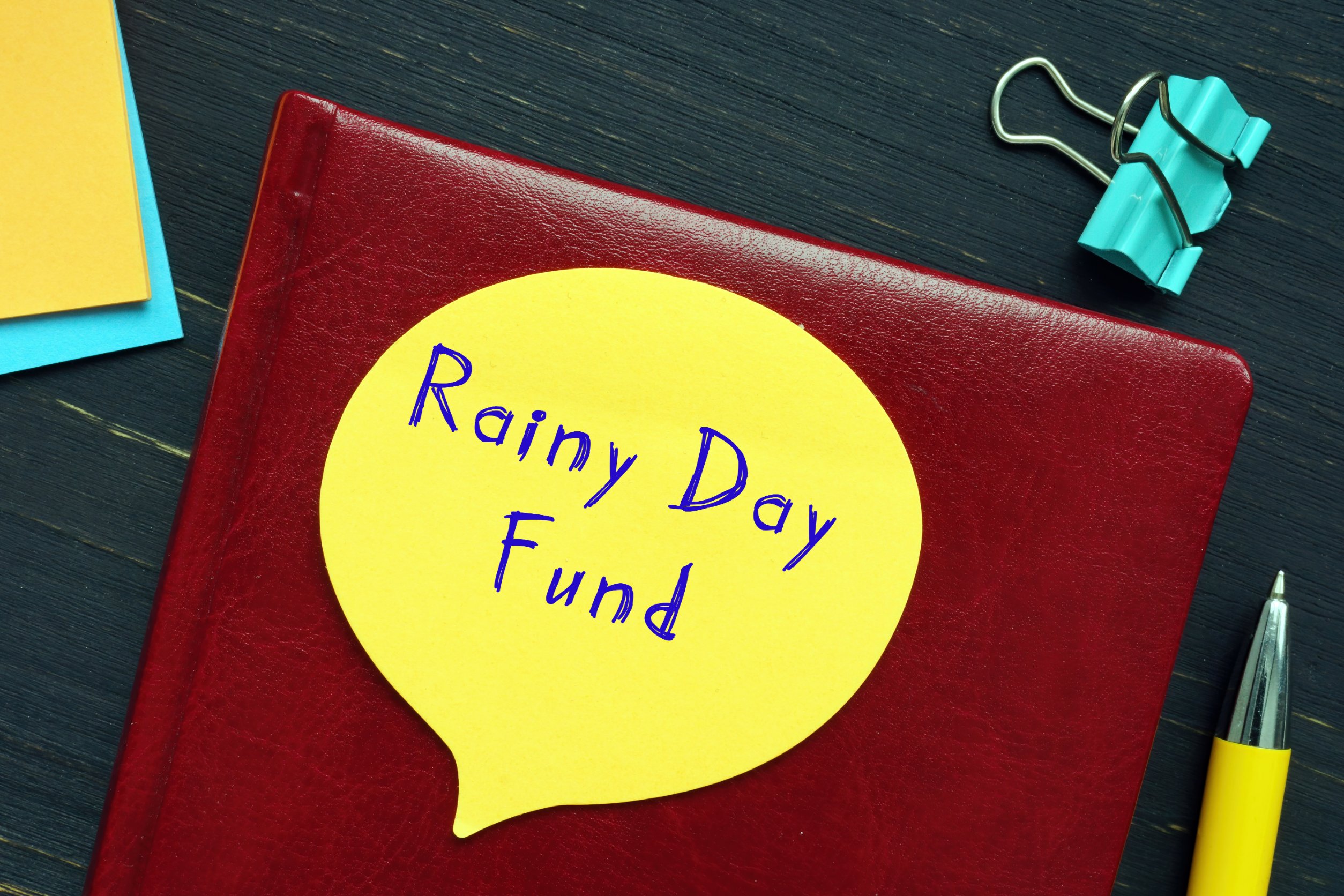You never know when something unexpected will occur or you will have an unplanned expense. Houses require maintenance, cars need repairs, and you never know when an accident will happen. Even if you perfectly plan and stick to a budget, life throws you curveballs. So, you have to plan for the unexpected so it doesn’t put you in financial jeopardy. However, more than half of Americans have less than the minimum recommended amount in their emergency funds (3 months of expenses) and 25% percent say they don’t even have an emergency fund established. The last thing you want in this situation is to rely on your credit cards to pay your bills and wind up in debt. Therefore, you need to start saving and managing your finances as soon as you start earning income. But, what savings strategy is best? Should you put your money in a rainy day fund vs an emergency fund?
What’s the Difference Between a Rainy Day Fund vs an Emergency Fund?
Although many people confuse these types of accounts, there are not the same. They each serve as a different type of safety net to help you when you fall into hard times. However, they are used for different purposes and types of expenses. So, the amount of money will vary between these accounts. To help define the difference, it’s important to understand what each type of fund is used for.
A Rainy Day Fund
You have probably heard the old adage of putting aside some money “for a rainy day.” So if you have a savings account dedicated to this, we refer to it as a rainy day fund. The idea is that you save money in this account for times when you experience unforeseen circumstances. These are the kinds of surprises that would be difficult to pay in full without savings and jeopardize your ability to pay your bills. Think of the last time you received a bill for unexpected car repairs, a medical emergency, home maintenance, or repairs. Did you have enough money set aside to cover the costs?
Your rainy day fund should have enough to cover these short-term or one-off expenses without affecting your ability to pay your bills on time. Think of your rainy day fund as a safety net to help soften the financial blow of these situations. I keep about $1,000 in mine for times like these. So when it happens, I won’t have to ask for a loan or use my credit cards and pay more in interest.
Unfortunately, no one can predict the future or what you will use the money for. But, the chances are high that you will experience some of these expenses, especially if you have a family or own your car and home. Things wear out, accidents happen, and we all face illness. Since you don’t know when unexpected expenses will arise, you can keep a rainy day fund so you are ready when the time comes.
An Emergency Fund
As the name implies, this is the money you save for financial emergencies that affect your livelihood. While unexpected expenses can make it difficult to get through the month, this money is reserved for situations that could cost you your home or future financial security.
For example, you would need an emergency fund if you lost your job and needed to pay your living expenses until you found a new one. Or, you would use it to support yourself if you experience an injury and can’t work. It could also save you from bankruptcy if you have astronomical medical expenses. Having an emergency fund can help you avoid a financial disaster when you have accrued thousands of dollars in bills, or even more.
When you set it up, the goal is to save enough in your emergency fund to last you through 3-6 months without income. An easy way to find this figure is to calculate your monthly expenses, then multiply it by the number of months you want to save. There are no limits as to how much you should keep in your emergency fund. But, the amount will vary depending on your lifestyle, spending habits, and financial responsibilities. You should have at least enough money in your emergency fund to replace your salary for a few months. However, you can always add more to pad your savings if you want more security.
So, What’s the Difference?
Although they are very similar, there are distinct differences in the size and scope of a rainy day fund vs an emergency fund. A rainy day fund is intended for much smaller expenses. Therefore, the amount you save will be much smaller.
On the other hand, an emergency fund is to temporarily replace your income. So, it should be much larger. As stated above, this fund should equal at least three months’ income. However, most financial advisors will suggest putting enough away to cover six months of expenses.
Should You Keep a Rainy Day Fund and an Emergency Fund?
Since you will use them for different expenses, it makes sense to keep both funds. But, be sure you keep them in separate accounts. This will make it easy to track your expenses and prevent you from using the funds for other purposes.
It may seem simpler to keep it as a single account. However, it’s easy to cross that line and borrow money from the wrong one. And if you don’t replace it, then the money won’t be there when you need it. If I have access to the funds, it becomes a huge temptation to spend. So in my case, it’s better to avoid it altogether and not make a habit of borrowing from either account.
Maintaining both will guarantee that you are prepared for unforeseen expenses, no matter if they are big or small. Therefore, both are important financial cushions to protect your finances.
Read More
- 4 Tips for Boosting Your Emergency Savings
- How to Budget For Emergency Home Repairs
- How To Build An Emergency Fund From Zero

Jenny Smedra is an avid world traveler, ESL teacher, former archaeologist, and freelance writer. Choosing a life abroad had strengthened her commitment to finding ways to bring people together across language and cultural barriers. While most of her time is dedicated to either working with children, she also enjoys good friends, good food, and new adventures.


